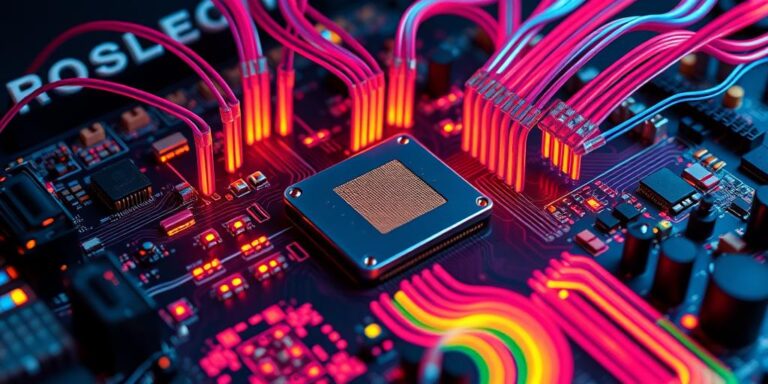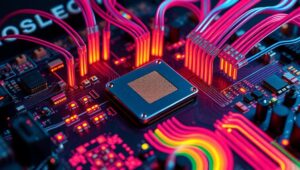Optical Computing: Using Light for Faster Processing (2027 Breakthroughs?)
For decades, the relentless march of computing power has been driven by shrinking transistors and increasingly complex silicon-based microchips. But as we approach the limits of Moore’s Law, researchers are exploring radically different approaches. One of the most promising is optical computing, which uses light instead of electricity to perform computations.
What is Optical Computing?
Traditional computers rely on electrons flowing through circuits to represent and process information. Optical computing, on the other hand, uses photons (light particles) to do the same. Imagine replacing wires with fiber optic cables and transistors with tiny optical switches. This allows data to be transmitted and processed at the speed of light, potentially leading to vastly faster and more energy-efficient computers.
How Does It Work?
At its core, optical computing relies on manipulating light. This can be achieved through various methods:
- Optical Transistors: These devices use light to control light. One beam of light can switch another beam on or off, mimicking the function of a traditional transistor.
- Holographic Storage: Information can be stored as holograms and retrieved using laser beams. This allows for incredibly dense data storage.
- Waveguides: Tiny channels that guide light, similar to wires guiding electricity. These waveguides can be used to create complex optical circuits.
- Nonlinear Optics: Certain materials can change the properties of light passing through them, allowing for complex computations to be performed directly with light.
Potential Advantages
Optical computing offers several key advantages over traditional electronic computing:
- Speed: Light travels much faster than electrons, potentially leading to processing speeds orders of magnitude faster than current computers.
- Bandwidth: Light can carry much more information than electrons, increasing the amount of data that can be processed simultaneously.
- Energy Efficiency: Optical components generally consume less energy than electronic components, leading to more energy-efficient computers.
- Parallel Processing: Light beams can cross each other without interfering, allowing for massive parallel processing.
Challenges and Obstacles
Despite its potential, optical computing faces significant challenges:
- Miniaturization: Building optical components that are small enough to fit on a chip is a major hurdle.
- Integration: Integrating optical components with existing electronic systems is complex.
- Material Science: Developing materials with the right optical properties is crucial.
- Cost: The cost of manufacturing optical components is currently high.
2027 Breakthroughs? What to Expect
While a fully functional optical computer is still some years away, significant progress is being made. By 2027, we might expect to see:
- Hybrid Systems: Prototypes that combine optical and electronic components to leverage the strengths of both.
- Specialized Applications: Optical processors used for specific tasks, such as image processing and machine learning.
- Improved Materials: New materials with better optical properties, leading to more efficient and compact optical components.
- Increased Research Funding: Growing interest and investment in optical computing research.
The Future of Computing
Optical computing represents a paradigm shift in how we think about processing information. While challenges remain, the potential benefits are enormous. As we continue to push the boundaries of technology, optical computing could pave the way for a new era of faster, more efficient, and more powerful computers.




